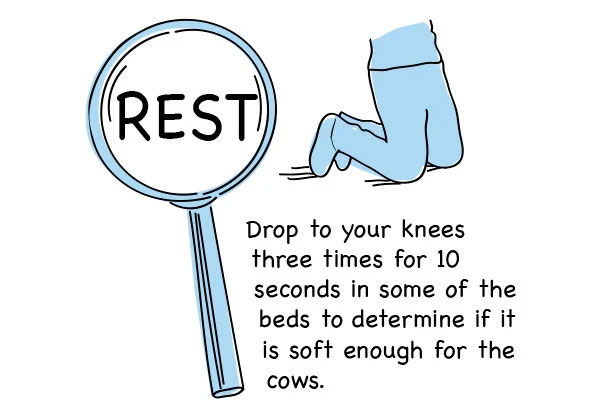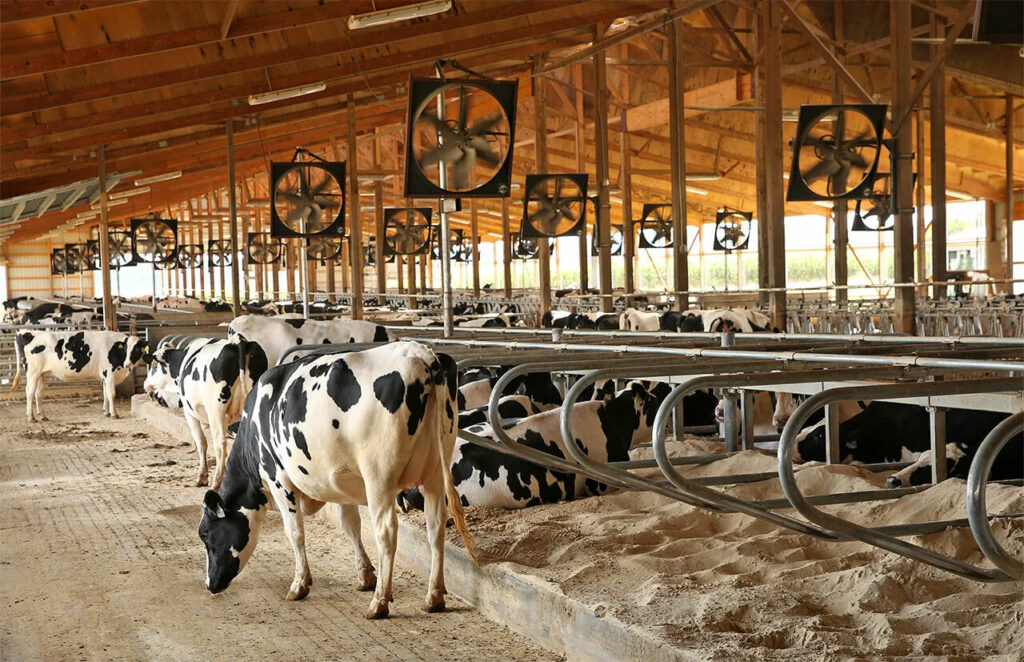
1. Air: Cows want maximum fresh air and ventilation.
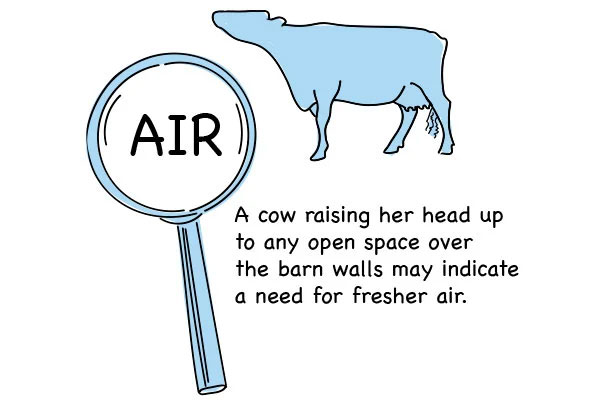
A cow raising her head up to any open space over the barn walls may indicate a need for fresher air. Lactating cows increase their body temperature considerably. To get rid of this excess temperature they primarily increase their rate of breathing. They try to cool themselves by remaining standing, instead of lying down. Standing makes respiratory movements easier. Sometimes they raise their upper body above their posterior part to make respiration even easier. The optimal temperature for lactating cows is 15 to 60º F. Below 40ºF, they need extra energy to stay warm. Depending on the humidity, over 70ºF cows start showing the first signs of stress.
2. Light: Cows with optimal milk production and fertility like to have 14 to 16 hours of light per day and six to eight hours of darkness.

Dry cows and heifers near calving like 8 hours of light and 16 hours of darkness. Light means 200 lux on cow level everywhere in the barn. You may verify this level by using a light meter, or a simple test is to see if you can read a newspaper any place in the barn. Dark means 50 lux or less, which is perceived as night by cows. Darkness can change their circadian cycle, possibly decreasing signs of heat. If we are not providing enough light or air, we need to consider breaking down walls, adding more windows or installing additional electric lights.
3. Space: A happy cow has free access to food, water and bed.
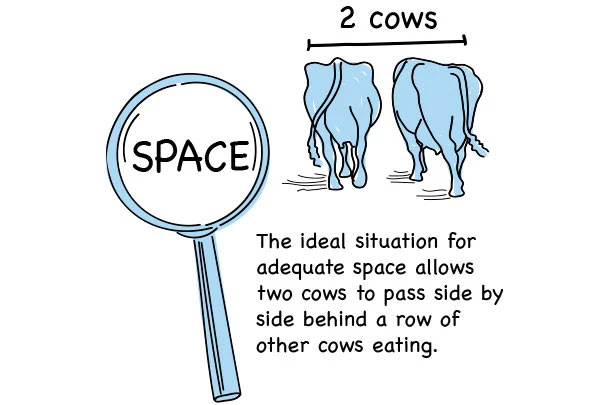
They need to be able to move freely around. They should be able to walk through the group without touching each other. They need to be able to retreat to a safe place in the event of some conflict or hierarchical issue. For instance, the dominant cows typically eat first, which can create an important obstacle to the subordinated ones. So besides good feet, good legs and good grip to the floor, they need space. This essential free movement is not possible in an overcrowded group. The ideal situation would allow two cows to pass side by side behind a row of other cows eating.
4. Food: Happy cows should be able to access the feed alley safely 24 hours per day, with enough space to eat in a relaxed manner
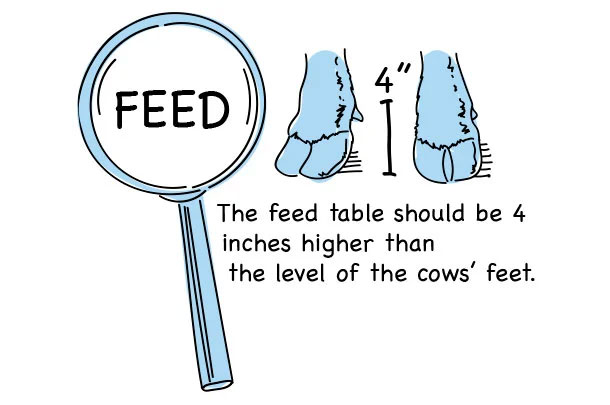
One spot per cow would make an ideal feeding environment. Cows are herd animals, thus, they like to eat at the same time. Grouping first-lactation cows separately from those with multiple lactations will result in higher productivity. That is because primiparous cows are generally subordinated, and, when separated, they will eat in a more relaxed fashion. They typically visit the feed alley more often and consume smaller portions but may have a higher dry matter intake. The feed table should be 4 inches higher than the level of the cows’ feet. If higher than this, cows will eat with a horizontal head position and will chew less and produce less saliva.
5. Water: Unlimited access to fresh drinking water is as important as having enough fresh food.
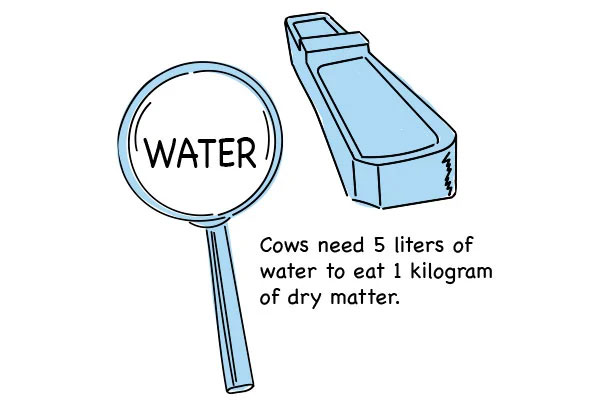
Cows need 5 liters of water to eat 1 kilogram of dry matter. Animals like to drink the cleanest, freshest water available. They also like to drink immediately after being milked. Thus, waterers should be in multiple positions close to the feed alleys. As a rule of thumb, there should be one big water source for every twenty cows, or one smaller supply for every ten cows. A cow drinks six to eight times a day, up to 20 liters at a time. Dirt at the bottom of the tanks will give the water an unpleasant taste. Bacteria will grow, causing the water to stink. This poses a danger to animal health. Empty water tanks daily and clean them deeply once a week.
6. Rest: Happy cows like to lie down on a soft and grippy bed floor.
